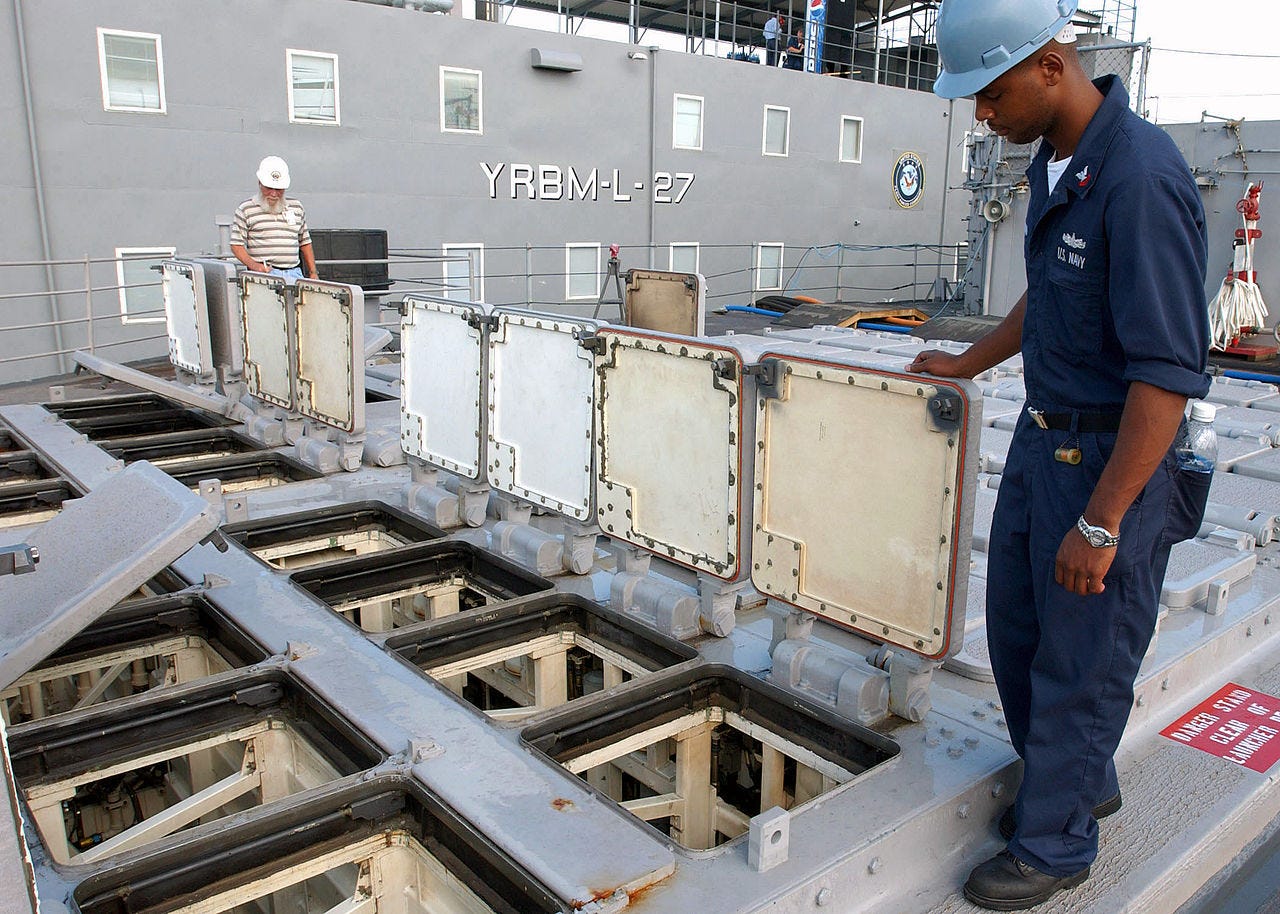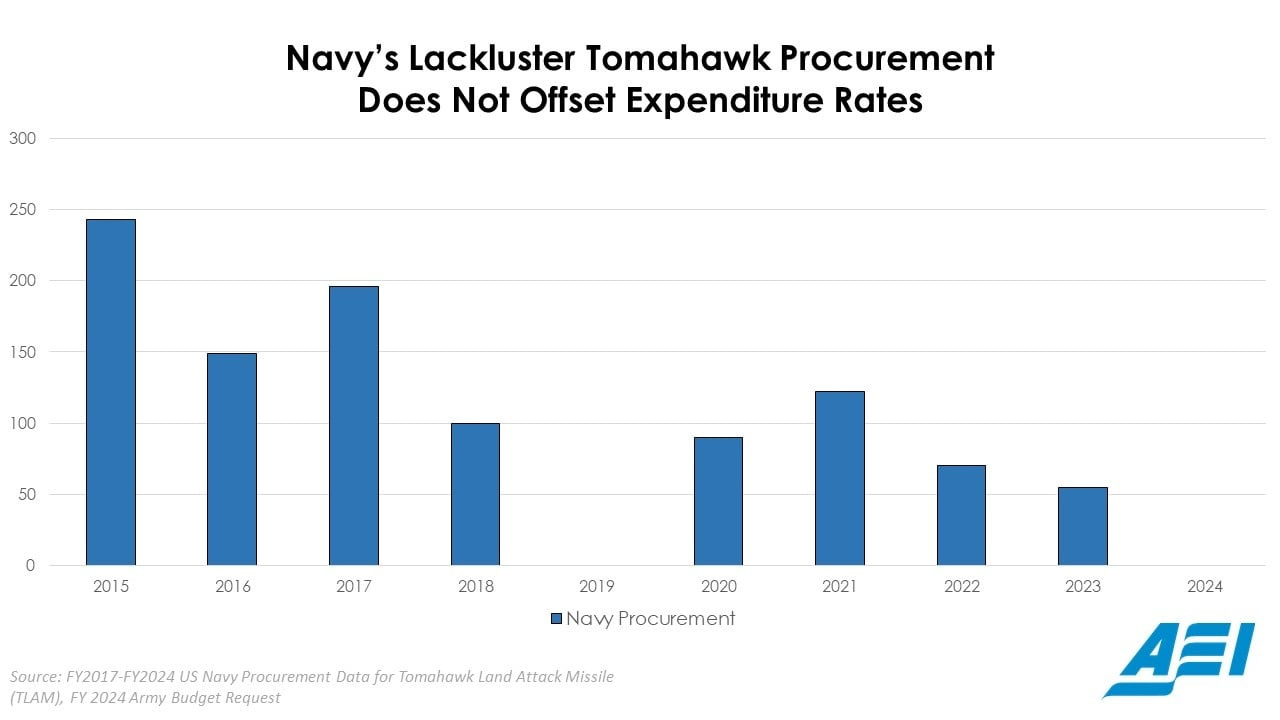I’m as guilty as everyone else.
When I look at the possibility of a war west of the International Date Line, I have a feel for the number of targets that will demand attention. Tied in to that, I know that we need to plan for most of our land-based assets Guam and west may not be usable for a significant period after D+1.
That means that to project power in the Western Pacific, it will need to come off carrier decks and out of VLS cells.
Untold articles exist stating we don’t have enough VLS cells nor enough platforms to carry them. It is easy to focus on that - it needs to be addressed - but it can’t be looked at in isolation.
As a former TLAM guy, I get the VLS cell challenge - especially when you need a lot of them for AAW as the People’s Republic of China will flood the air with ASCM and ASBM the minute our fleet gets in range. We don’t have the ability to swap loadouts once we leave homeport - and for WESTPAC based units, after D+0 they may have to move east of the International Date Line to change load outs or reload.
How many reloads?
We’ve talked for years about our shallow magazines; filled via the unholy coupling of peacetime accountants and pliable war planners selling the 72-hour war & Deterrence by Punishment snake-oil.
No one goes to opening day of dove season with only a half-dozen shells, and no one should plan for a Great Pacific War like we have.
Our friend Mackenzie Eaglen over at The National Interest has the numbers for you. Great credit to Mackenzie on this point, she has been telling this story for years to anyone who will listen.
While the Navy does have a large existing stockpile of Tomahawks to sustain its land-attack capability, it has recently been firing the missiles faster than it can replace them. According to the Navy, opening day strikes alone expended more than 80 Tomahawks to hit 30 targets within Yemen.
Last year’s entire Tomahawk purchase of 55 missiles accounted for 68 percent of the precision munitions fired at the Houthis in one day. This is an unsustainable rate of expenditure. However, this represents adherence to, rather than deviation from, the norm.
Prior strikes in Syria expended fifty-nine Tomahawks in 2017 and an additional sixty-six in 2018. The Navy bought just 100 Tomahawks in 2018 and then zero Tomahawks in 2019—failing to offset the expenditure rate of the Syria strikes.
Firing off more weapons than America buys causes stockpiles to decline quickly. The same weapons reserve the nation would need should Beijing seek to use force to take Taiwan while the United States is supporting wars in two other regions.
Like most of the United States high-tech precision-guided munitions, the Tomahawk suffers from a recent history of inadequate and unstable procurement. In the last ten years, $2.8 billion has been spent on TLAM procurement by the Navy to procure just 1,234 missiles.
…
In the 2024 White House budget request, the Navy would buy zero new land-attack Tomahawks and instead opt to invest in the experimental modification of fifty standard land-attack Tomahawks into the Maritime Strike Tomahawk (MST) variant, designed to hit ships at sea.
Just look at it;
If anyone has an explanation that makes sense, I’m all ears.
All I know is a war is afoot in the Western Pacific and we will burn through our existing TLAM and other precision-guided weapons inventory - especially those with a standoff capability - very fast.
However, the war will need to be fought. There is no training time out - or procurement timeout - in war. As such, we will ask our military to execute the mission with whatever they have at hand … that means short-ranged, not-so-precision-weapons. That means an uglier, bloodier war for us. How many aircraft and ships can present production replace for wartime losses?
We may not be prepared to fight a long war, but a long war may be prepared to fight us.






geez CDR, yer such a downer in the early AM
but by God, yer right!
I remember an article in the Wall Street Journal, many years ago. The gist was governments must do three things. Border security; national defense. Internal order; meaning protection of property, contracts and infrastructure. Thirdly, an honest buck. Governments may do other tasks, but that will be done at the expense of these three tasks that only a government can do.
A modest proposal though. A lot of current government is income transfers; the perpetual attraction of socialism being taking other people's stuff. Why not turn these transfers, through military procurement contracts, into jobs with bennies?